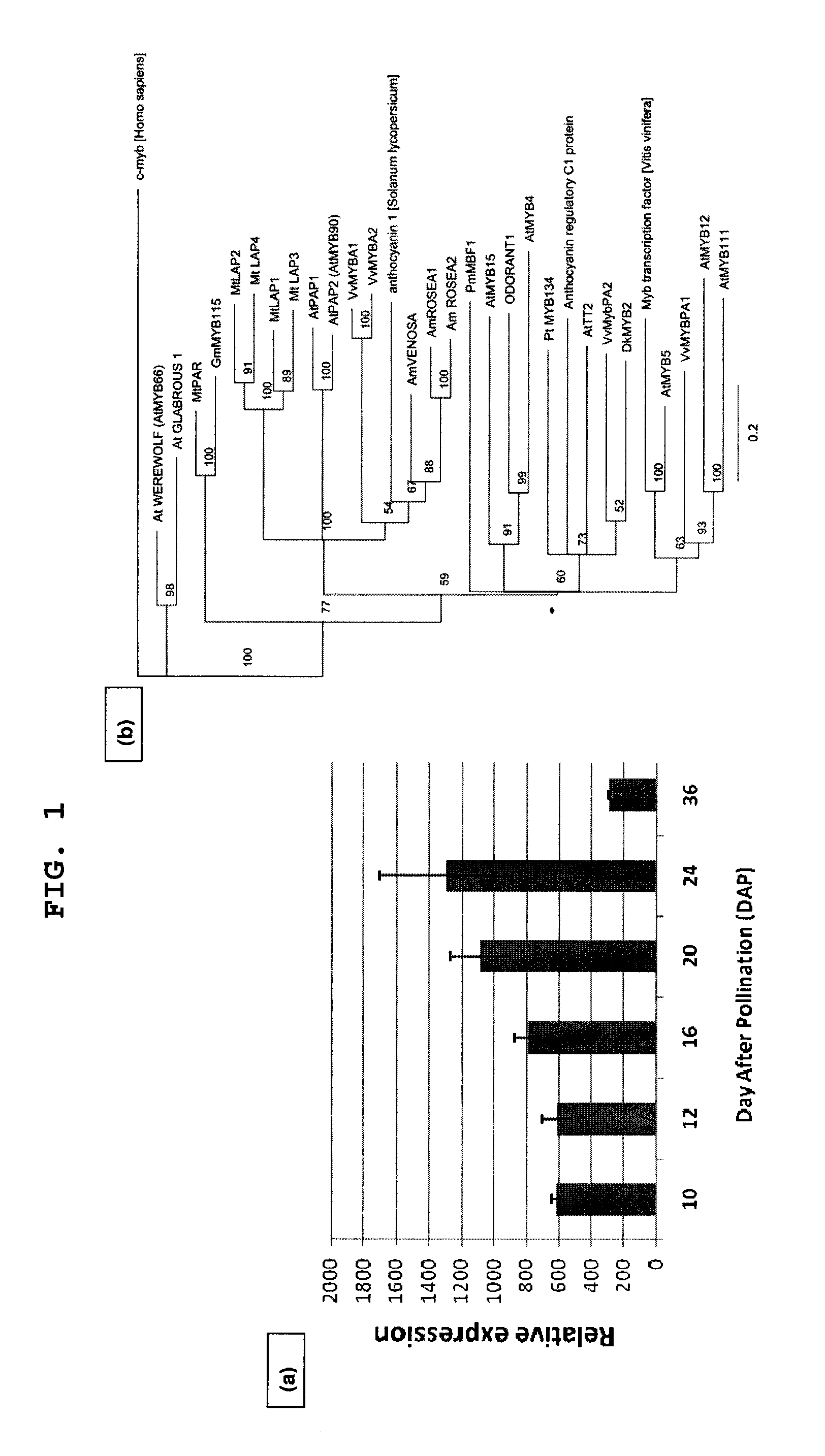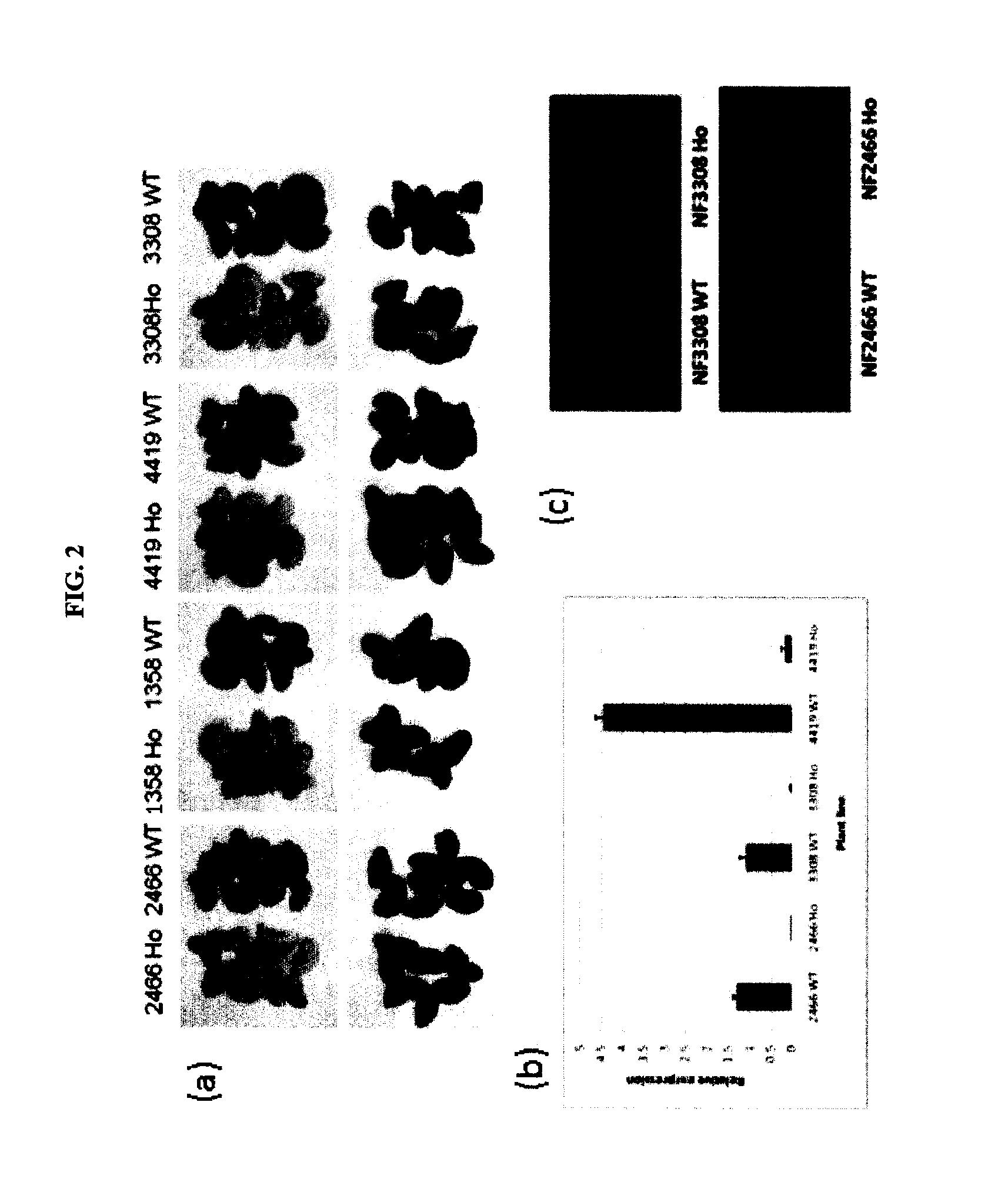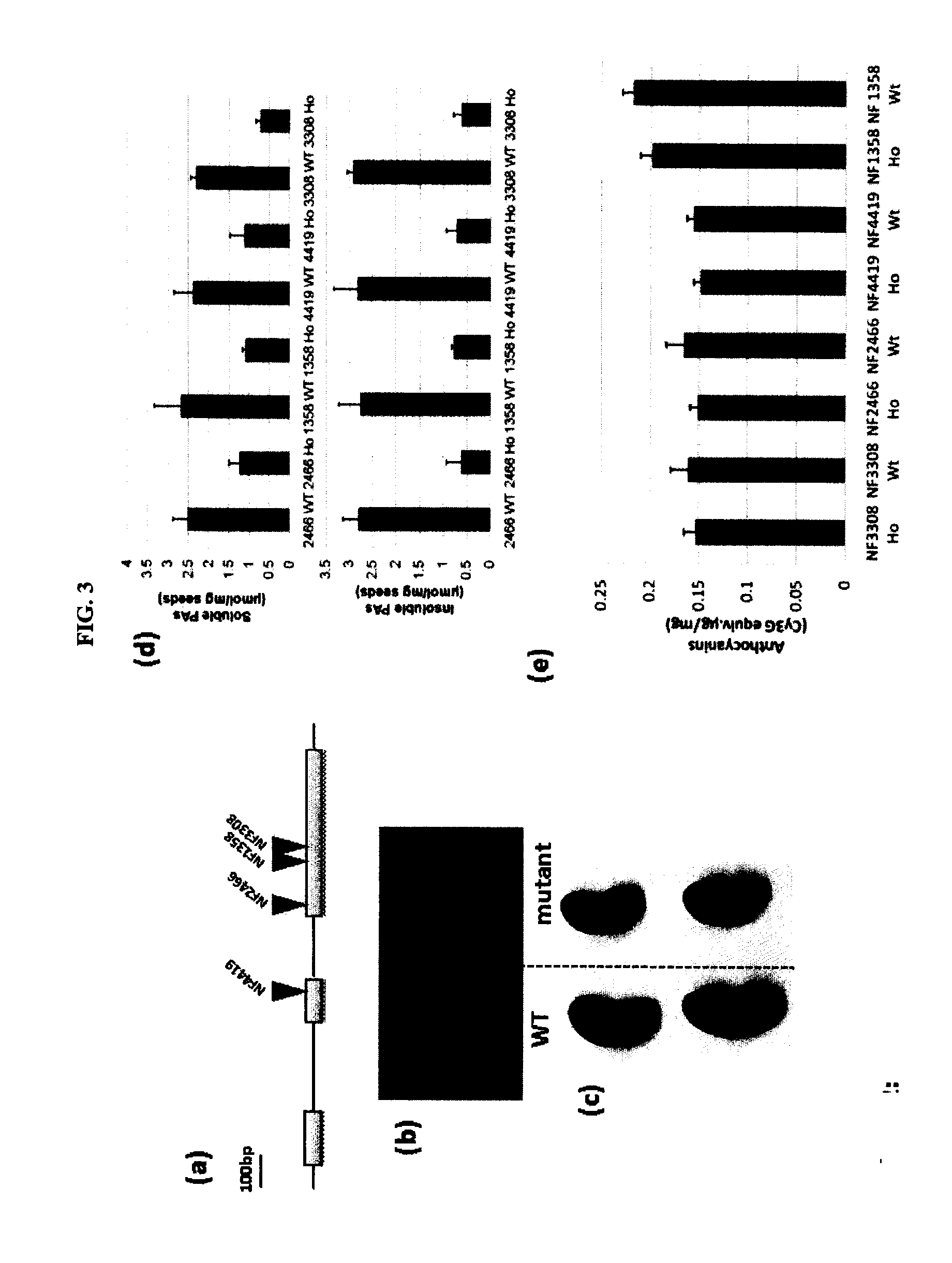Methods and compositions for regulating production of proanthocyanidins
a technology of proanthocyanidins and compositions, applied in the field of plant genetics, can solve the problems that the production of proanthocyanidins can affect the nutritional quality of human and animal food, and achieve the effects of regulating flavonoid synthesis, regulating flavonoid synthesis, and modifying flavonoid
- Summary
- Abstract
- Description
- Claims
- Application Information
AI Technical Summary
Benefits of technology
Problems solved by technology
Method used
Image
Examples
example 1
MtPAR Encodes a MYB Transcription Factor with Seed Coat-Specific Expression
[0110]The M. truncatula Gene Expression Atlas (“MtGEA”) was used to select seed-induced transcription factor (“TF”) genes for genetic characterization. The MtPAR gene was identified by its seed-specific expression profile (probeset ID Mtr.50541.1.S1_at), using the Medicago truncatula Gene Expression Atlas webserver (www.mtgea.noble.org; Benedito et al., 2008; He et al., 2009). Alignment of the deduced amino acid sequences of MtPAR and other proteins of the MYB R2R3 family was carried out using ClustalW in the Geneious software suite (www.Biomatters.com; Biomatters, Auckland, NZ). The phylogenetic tree was built using a Neighbor-Joining algorithm with 100 bootstrap replicates. The R2R3 domain of each MYB factor was identified using the PFAM protein family database (Bateman et al., 2002). GeneBank accession numbers of all amino acid sequences are provided in Table 1.
TABLE 1GeneBank accession numbers of amino ac...
example 2
Par Mutants are Defective in Seed Coat PA Accumulation
[0112]Four independent mutants with retrotransposon-insertions in the MtPAR gene were isolated via a PCR-screen of DNA from a Tnt1-insertion mutant population (Tadege et al. 2008). Generation of the Medicago truncatula Tnt1 insertional mutant population and growth of R1 seeds were as described previously (Tadege et al. 2008). Reverse genetic screening for Tnt1 retrotransposon insertions in MtPAR was performed using a nested PCR approach (Cheng et al., 2011). PCR products from target mutant lines were purified with QIAquick™ PCR purification kit (Qiagen) and sequenced using Tnt1 primers to confirm insertions in MtPAR. The primers used were:
F1:(SEQ ID NO: 5)TGAGTGGCAGTGGAGTGTTT;F2:(SEQ ID NO: 6)TAAAGGTGCTTGGTCTCGTGAA,R1:(SEQ ID NO: 7)GGTCTCTAATTTTCCGTCAC,andR2:(SEQ ID NO: 8)GGTCCCCTCATTGGAATAAATC.
[0113]Tnt1 insertions were found in the second exon of MtPAR1 in mutant line NF4419 and in the third exon in lines NF2466, NF1358, NF3308...
example 3
Ectopic Expression of MtPAR Induces Pa Biosynthesis
MtPAR Regulates Expression of Pa Biosynthesis Genes
[0119]To demonstrate a role for MtPAR in PA biosynthesis, M. truncatula roots were transformed with the MtPAR cDNA coupled to the constitutively-active CaMV-35S promoter (Odell et al., 1985).
[0120]The open reading frame (ORF) of MtPAR was amplified from cDNA synthesized from developing pods of ecotype R108 using the Trizol® RNA extraction method (Invitrogen) and Superscript III reverse transcriptase (Invitrogen). The primer sequences used for amplification were forward primer: ATGGTTAGAAGTCCTAAGGAGGTT (SEQ ID NO:9); and reverse primer: TCAATCATTTTCAAGTCCAAGAAAG (SEQ ID NO:10). PCR products were cloned into the entry vector pENTR / D / TOPO (Invitrogen). After sequencing to validate the sequence of MtPAR in the entry vector, the ORF was recombined into a destination vector, pB7WG2D using the LR clonase reaction (Invitrogen). The GUS gene was also recombined into pB7WG2D vector, which was...
PUM
| Property | Measurement | Unit |
|---|---|---|
| Fraction | aaaaa | aaaaa |
| Fraction | aaaaa | aaaaa |
| Fraction | aaaaa | aaaaa |
Abstract
Description
Claims
Application Information
 Login to View More
Login to View More - R&D
- Intellectual Property
- Life Sciences
- Materials
- Tech Scout
- Unparalleled Data Quality
- Higher Quality Content
- 60% Fewer Hallucinations
Browse by: Latest US Patents, China's latest patents, Technical Efficacy Thesaurus, Application Domain, Technology Topic, Popular Technical Reports.
© 2025 PatSnap. All rights reserved.Legal|Privacy policy|Modern Slavery Act Transparency Statement|Sitemap|About US| Contact US: help@patsnap.com



